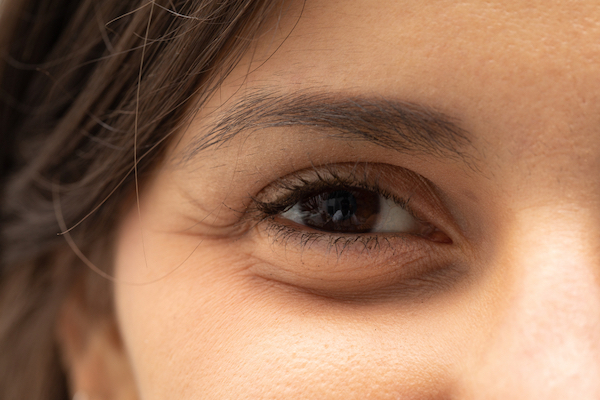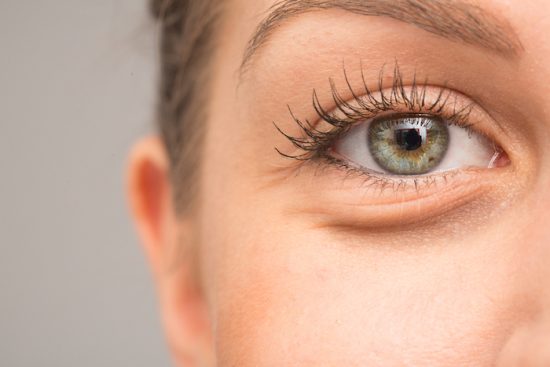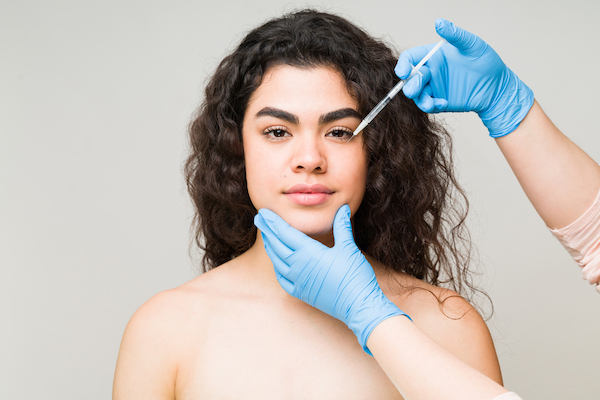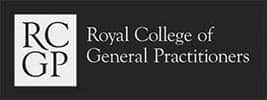
Updated June 2024
It’s normal to occasionally experience bags under your eyes, especially if you’ve not slept well. But if you still have puffy eyes and dark circles after plenty of sleep, there are ways to help prevent and reduce them.
In this post, we explain the causes of eye bags and dark circles and provide tips and information about the top aesthetic treatments to make them less noticeable.
Dark bags under the eyes are caused by visible blood vessels, which can become more noticeable when the layer of skin in this area thins, or the blood vessels become enlarged. Under-eye bags and dark hollows can result from lifestyle, genetics and medical issues. Here are the 10 most common causes of dark circles and bags under the eyes.
Too little sleep can spell trouble for your under-eye area. When you have a restless night, your blood vessels dilate, increasing blood flow. As the layer of skin under the eyes is thinner, a higher volume of blood becomes more noticeable here, causing dark circles that make you appear tired.
It’s normal for bags under the eyes to become more pronounced as you age. Part of the natural ageing process involves collagen levels depleting and muscles and tissues weakening over time, resulting in a loss of firmness in the skin. As you get older, you may find the fat supporting the eyes slips lower, causing the under-eye area to appear puffy and swollen.
Another reason for pronounced bags under your eyes may be genetics. Unfortunately, this can be a physical feature that runs in your family, making you more prone to having them.
Studies have proven that smoking reduces collagen production, which can lead to the development of forehead wrinkles, perioral lines and under-eye bags, among other skin problems. The nicotine in cigarettes also disrupts your natural sleep pattern, which can cause excess fluids to collect beneath your eyes.
Common allergy symptoms include a runny nose, sneezing and watering eyes. However, did you know that puffy eyes due to congestion and swelling in the sinus tissue can also indicate an allergic reaction?

When considering what causes under-eye bags, you may not have thought about your diet. If you struggle to resist salty snacks, this could be what’s behind your tired-looking eyes, as your body retains fluid when you eat salty food. Beneath your eyes is one of the places in your body where water collects, which is why excess fluid from salty foods can lead to swelling.
Spending too much time in the sun can damage skin cells and deplete collagen levels, causing bags under your eyes to develop.
Drinking a lot of alcohol dehydrates the body, negatively impacting the skin. When the skin in this area becomes dry, dull, and weak, bags under the eyes may develop.
Makeup can help mask bags under your eyes, but forgetting to wash products off before bed can make them worse. Applying eye creams too close to the lash line can also cause irritation and swelling.
Certain health conditions, such as thyroid disease, can cause swelling in the delicate under-eye area. Issues like dermatitis, chronic kidney disease, and dermatomyositis can also negatively impact this region. Additionally, some medications may lead to under-eye bags and dark circles.

Under-eye bags are usually nothing more than a cosmetic issue, but if you’d like to improve their appearance, you can make changes to your lifestyle. There are also simple at-home treatment options you might want to try. Alternatively, you may also want to consider cosmetic surgery and non-surgical aesthetic under-eye treatments.
In this section, we explain some of the ways you can reduce the appearance of bags under your eyes and improve the appearance of dark circles.
Try some of these simple techniques at home to reduce the appearance of bags under your eyes and dark circles.
• Wash your face before bed: Remove makeup before bed to avoid irritation. Always use a clean washcloth and gentle cleanser to remove cosmetic products and prevent bags under the eyes.
• Try a cold compress: A cool compress under your eyes can reduce blood flow and help with inflammation and swelling. You don’t have to use a product made for this purpose; try a small handful of frozen peas in a plastic food bag with an airtight seal or chilled cucumber slices.
• Improve your bedtime routine: Help yourself get enough sleep by avoiding caffeine and using nightlights on screens for at least two hours before you plan to go to bed. Better still, ditch the screens and take a bubble bath or read a book to wind down more easily. It may also help to sleep with your head slightly raised. Try using an extra pillow or elevating the head off the bed a few inches.
• Use a haemorrhoid cream to reduce swelling: Did you know over-the-counter haemorrhoid creams can narrow blood vessels and reduce puffiness beneath the eyes? While we don’t recommend using this as a regular treatment, for special occasions, carefully applying a small amount will reduce dark circles and bags under your eyes.
• Seek treatment for your allergies: Seeing a doctor will be a big help if you have under-eye bags caused by allergies. The right medical treatment should reduce swelling in your sinuses and ease any other allergy symptoms you suffer from.
• Apply a product containing caffeine: Caffeine is a vasoconstrictor and is increasingly used in eye creams to reduce the appearance of puffiness. Try a specialist skincare product or rest chilled tea bags on closed eyes for rapid relief.
• Cut out the bad stuff: Lowering your salt intake, limiting the amount of alcohol you drink, and quitting smoking could significantly improve the appearance of eye bags and dark circles. Cutting out these negative triggers will decrease fluid retention, boost hydration, and help you retain collagen for radiant, plump skin.
• Protect your skin in the sun: Another way to prevent bags under the eyes is to reduce sun exposure and use sunscreen daily. Protecting your skin from the sun’s harmful ultraviolet (UV) rays is essential for a radiant complexion.

Changing everyday habits can be helpful, but some patients may require treatment to combat dark circles and under-eye bags. A combination approach is often the most successful in getting rid of bags for good.
• Procedure:Blepharoplasty is an outpatient procedure that can significantly improve sagginess and wrinkles in the under-eye area. This surgical procedure is normally performed under a local anaesthetic, and there are two techniques:
Regardless of the placement of the incision, the surgeon will trim and reposition fat and muscle and the incision will be closed with dissolvable sutures.
• Cost: Cosmetic eyelid surgery costs between £2000 and £6000.
• Recovery: Your under-eye area will be swollen and you may have some bruising following blepharoplasty. Generally, you need to allow at least two weeks for recovery.
• Results: Permanent reduction of eye bags and the appearance of dark circles.
• NB: In the UK, any surgeon can legally perform cosmetic surgery, so it’s crucial to ensure your cosmetic surgeon is fully qualified and listed on the GMC specialist register as a plastic surgeon. Thorough research is essential when considering a surgical facelift. Avoid making decisions based solely on patient before-and-after photos or star ratings on websites, as these can be deceptive.
• Procedure: This relatively new procedure involves numbing the lower eyelids with a local anaesthetic. Intraocular shields are then inserted inside the eyes to protect them from the laser. An optical fibre as thin as a strand of human hair is inserted beneath the eyes to deliver the laser energy and heat the surrounding tissue, causing extra fat cells to break down and stimulating collagen production.
• Cost: Endolift treatment typically starts at £1500 for one area.
• Recovery: There is no need for downtime or a recovery period. There may be some redness, but this will generally be minimal and disappear within a few hours.
• Results: Skin tightening and fat removal results are permanent.
• Procedure: Tear trough filler is an excellent option to smooth and rejuvenate the area beneath your eyes, especially if you’d rather not undergo plastic surgery. During treatment at our aesthetic clinic, hyaluronic acid (HA) filler is injected into targeted under-eye areas, reducing eye bags and dark circles by smoothing the under-eye area and making it less sunken.
• Cost: Tear trough treatment of eyebags and dark circles with HA fillers in London at Harley Street, MD, is £350.
• Recovery: Although the under-eye area may feel sore, tear-trough treatment does not cause downtime.
• Results: The procedure will result in an instant lifting effect, but it could take up to two weeks for the full effect to be apparent. Fillers take time to blend with the tissues around them, and the results will continue to improve over the next four to six weeks.
The results are natural-looking and comparable to surgical under-eye bag removal cosmetic surgery procedures. This treatment is not permanent and results typically last between six and eighteen months, with most patients requiring a top-up treatment annually.
• Procedure: If you’re looking for skin therapies that can treat wrinkly under-eye skin, chemical peels are another effective treatment. A chemical solution is applied to the skin to remove the top layer of skin, revealing a new, healthy layer underneath.
• Cost: At Harley Street MD, chemical peels start at £150.
• Recovery: This will depend on the strength of the peel and may take 2 to 10 days. During this time, the area may look red, and you will have flaking and peeling skin.
• Results: Enhanced cellular growth increases collagen synthesis, which smoothes out wrinkles and reduces pigmentation, resulting in a plumper and smoother appearance. Multiple treatments may be required for the best results, which tend to last around 12 months.
The under-eye area is very delicate and sensitive. If you’re considering a cosmetic procedure to improve the appearance of under-eye bags, finding a qualified and highly experienced aesthetic practitioner working in a reputable clinic is critical. Below are the key factors to consider when looking for the best aesthetic practitioner to perform under-eye treatments.
• Qualifications: In the UK, regulations regarding who can perform non-surgical cosmetic procedures are not stringent. There are no specific qualifications or training requirements to perform treatments such as dermal fillers or chemical peels, meaning anyone can offer these treatments. We recommend you check that your aesthetic practitioner is registered with either the:
• Advertising: Creating a professional-looking website and social media accounts is relatively easy. However, there is no way to verify whether recommendations and before-and-after photos are genuine. Even if the aesthetic practitioner claims to be a registered medical professional, always check with the above bodies before proceeding.
• Training: Although most aesthetic practitioners will have attended at least some training, there are numerous one-day courses for dermal fillers, and unless the practitioner is already a registered nurse, dentist, or doctor with a good understanding of facial anatomy and injectable procedures, this is rarely adequate.
• Experience: This is a contested area, as a medical professional with years of experience performing injections may have different experiences than a non-medically registered practitioner, yet a medical professional is more likely to have a better understanding of injectable procedures and facial anatomy.
• Work Environment: Many aesthetic practitioners may offer home services, but this is not recommended. A sign of a committed and continuously developing aesthetic practitioner is their choice to work in a reputable clinic.
• Consultation: Your aesthetic practitioner should always provide a consultation and take the time to check your medical history, discuss your requirements, answer any questions, and explain your options. This will help you decide on a treatment that’s right for you.
If you’re sick of tired-looking eyes, we’d love to help you find the right treatment for you. Arrange a no-obligation consultation at our London cosmetic clinic and discuss non-surgical under-eye and eye bag treatment options with our expert team.
We have referenced the research and study references we used, in addition to our internal research, here; most of them have an external link to the scientific publication. We work hard to bring you the most recent, impartial, factual, and evidence-based information to help you make informed decisions.
• Dark circles can arise from health issues, lifestyle or genetics. From: UCLA
• Jorgensen LN, Kallehave F, Christensen E, Siana JE, Gottrup F. Less collagen production in smokers. Surgery. 1998 Apr;123(4):450-5. PMID: 9551072. From: NIH
• Swollen Eyes From Allergies (Allergic Conjunctivitis). From: Health
• Thyroid eye disease. From: RNIB
• Eyelid surgery. From: NHS.







